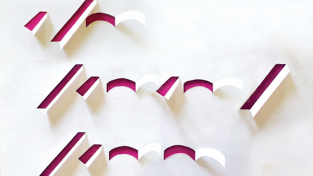The Maven: How to Take a Great Group Photo with Your Mobile Phone

We are all photographers. Each one of us carries in our pocket an amazing tool to take family photos, pictures of our kids and group shots at every gathering. But even the best smartphones need some help making good photos, which is where the human operator comes in.
When I use a professional camera, I have at my fingertips a variety of settings that I can adjust to account for different lighting and background scenarios. Admittedly, smartphones lack these options. But still, there are a handful of steps you can follow to improve the quality of the photos you’re taking. Here are a few pointers to help make your off-the-cuff family photo sessions more album-worthy and less cringe-worthy.
1. Maximize lighting.
Phone cameras cannot handle backlighting. Put people in front of a window and they will become silhouettes. I promise. And that itty-bitty flash on your phone will not do one thing to save you. Instead of placing your group in front of a window, all you have to do is turn everyone around, so the group is facing the window, and you’ll be able to see everyone’s lovely, smiling face, brightly lit with natural light.
2. Step away from the wall.
Similarly, don’t put your group of subjects directly against a wall. For some reason, standing against a wall when we have our picture taken seems to be human nature. But being right up against the wall can often lead to weird shadows and tight spaces. Photos are much more flattering if your subjects stand 1–3 feet away from the wall. It’s a simple adjustment that will make your indoor photos of people instantly better.
3. Rotate your phone.
There are two orientations to photographs: portrait and landscape. The portrait, or vertical, orientation is fine when it’s one or two people in a photo, but when you’re doing large groups, you’ll have a much better composition and framing if you just turn the phone 90 degrees. Doing this will also reduce the amount of distortion in the photo. (Have you ever wondered why everyone’s heads look so small?) Horizontal is much more flattering.
4. Hold still.
Big events like parties and wedding receptions are often low-light situations, which are difficult conditions for smartphone cameras. The flash on your phone is essentially useless in situations like this, so your best alternative is to just hold your phone very still as you take the photo. Encourage your subjects to stand still as well. This will reduce the amount of motion blur and make your photos appear sharper.
5. Get closer.
I see a lot of people “zooming in,” using their fingers on a touch screen to bring the subjects in closer, but this just reduces the quality of your photo. When using a phone camera, you’re better off just moving yourself closer to your subjects, rather than using the built-in zoom technology.
These are just a few tips to help you make better pictures, but simple changes can have a big impact. Happy shooting!
 Since 2009, Leise Jones ’01 has specialized in making authentic, natural-looking photographs of people and events. She works with couples, families, small businesses and nonprofit organizations of all kinds — including many MHC alumnae — who are looking for photographs to tell their stories, commemorate their important days and communicate their missions. Learn more and see her work.
Since 2009, Leise Jones ’01 has specialized in making authentic, natural-looking photographs of people and events. She works with couples, families, small businesses and nonprofit organizations of all kinds — including many MHC alumnae — who are looking for photographs to tell their stories, commemorate their important days and communicate their missions. Learn more and see her work.
This article appeared in the summer 2019 issue of the Alumnae Quarterly.
Are you a maven?
Pitch us your area of expertise at quarterly@mtholyoke.edu.
July 29, 2019










I have been doing every shot wrong. Thank you for the useful tips.